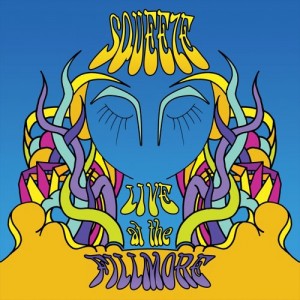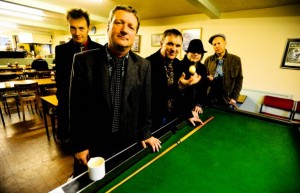 In a recent thought piece on The A.V. Club, Josh Modell ruminated on the dilemma of bands touring endlessly around the hits that made them famous, even as they continue to record new material (or not). He rightfully noted everyone from The Pixies to Van Halen for their habits of living in the past on stage, writing, “I wonder if there’s not a bit of shame in strict nostalgia. Sure, Frank Black has made plenty of new music since the Pixies started playing again, but it hasn’t reached anywhere near the same audience. What does a once-and-maybe-current great songwriter do?”
In a recent thought piece on The A.V. Club, Josh Modell ruminated on the dilemma of bands touring endlessly around the hits that made them famous, even as they continue to record new material (or not). He rightfully noted everyone from The Pixies to Van Halen for their habits of living in the past on stage, writing, “I wonder if there’s not a bit of shame in strict nostalgia. Sure, Frank Black has made plenty of new music since the Pixies started playing again, but it hasn’t reached anywhere near the same audience. What does a once-and-maybe-current great songwriter do?”
This is the same question that’s dogged Chris Difford and Glenn Tilbrook of Squeeze for five years. The British duo formed one of the most evocative songwriting partnerships in the post-Lennon-McCartney era, with songs like “Up the Junction,” “Goodbye Girl,” “Pulling Mussels (from the Shell)” and “Tempted” serving as a light and friendly-sounding but no less powerful dive into the seas of post-punk and New Wave that were making all the tastemakers dance in the late ’70s and early ’80s. Paradoxically, they never enjoyed much chart success in America – their biggest hit was the slickly-produced “Hourglass,” ushered into the Top 20 by a catchy video in 1987 – but, thanks to a spate of licensing opportunities and nostalgia compilation appearances, they’re on the lips of at least 58 percent of anyone who loved the ’80s.
In 2007, after a nine-year split, Squeeze reformed with Difford, Tilbrook and a lineup of old hands (bassist John Bentley, who played on the band’s classic albums, Argybargy (1980), East Side Story (1981) and Sweets from a Stranger (1982)) and new ones (keyboardist Stephen Large and drummer Simon Hanson, from Tilbrook’s backing band) filling out the remainder of the group. The band have toured like clockwork in the years since, releasing a live album in 2007 and Spot the Difference, one of those unfortunate collections of re-recordings a band cuts to compete with their hits, in 2010. (Some copies were packaged with yet another live album, as well.) Now, on the eve of another American tour that will see them performing at Coachella this coming weekend, the band has released their third post-reunion live album, the simply titled Live at The Fillmore, recorded at the iconic San Francisco venue in 2010. Are Squeeze, like so many others, due to collapse under the heavy weight of their own nostalgia?
Happily, this time, the answer is no. Live at the Fillmore is packaged with a few gimmicks and a few surprises, together which make this the best celebration of what makes Squeeze great since they reunited. Part of the success is the presentation: this set is pressed on two vinyl platters, boosting the collectible factor for fans, and noted engineer Bob Clearmountain has mixed the set. So it doesn’t look or sound like the work of a reunited band with only enough resources to put out a semi-decent product.
It also helps that, in their five years on the road, Squeeze has only gotten better. Their standards are performed with a whip-crack urgency, and they know when to deviate from what fans might expect from a typical set. Whether it’s a virtuosic solo from Tilbrook, who, someday, will cease to be seen as an underrated guitarist, or surprise deep cuts sprinkled into the set list (lost classic “If It’s Love” from 1989’s Frank, “Hope Fell Down” from the “lost Squeeze album” Difford & Tilbrook released under their own name in 1985, “Mumbo Jumbo” and “Someone Else’s Bell” from the back end of East Side Story), there’s plenty to rediscover among the songs you’ve committed to memory hundreds of times over.
Squeeze’s transition from underrated legacy act to underrated legacy act with new material may yet take time. Recent promotional materials still indicate Difford and Tilbrook are working on new songs, but they have yet to be heard. (Those same materials also mention a documentary on their career in the works from the BBC, though, which is easy to geek out about.) But if Squeeze is going to spin their wheels with a live set as fun as this one, it’s hard to complain.






Comments